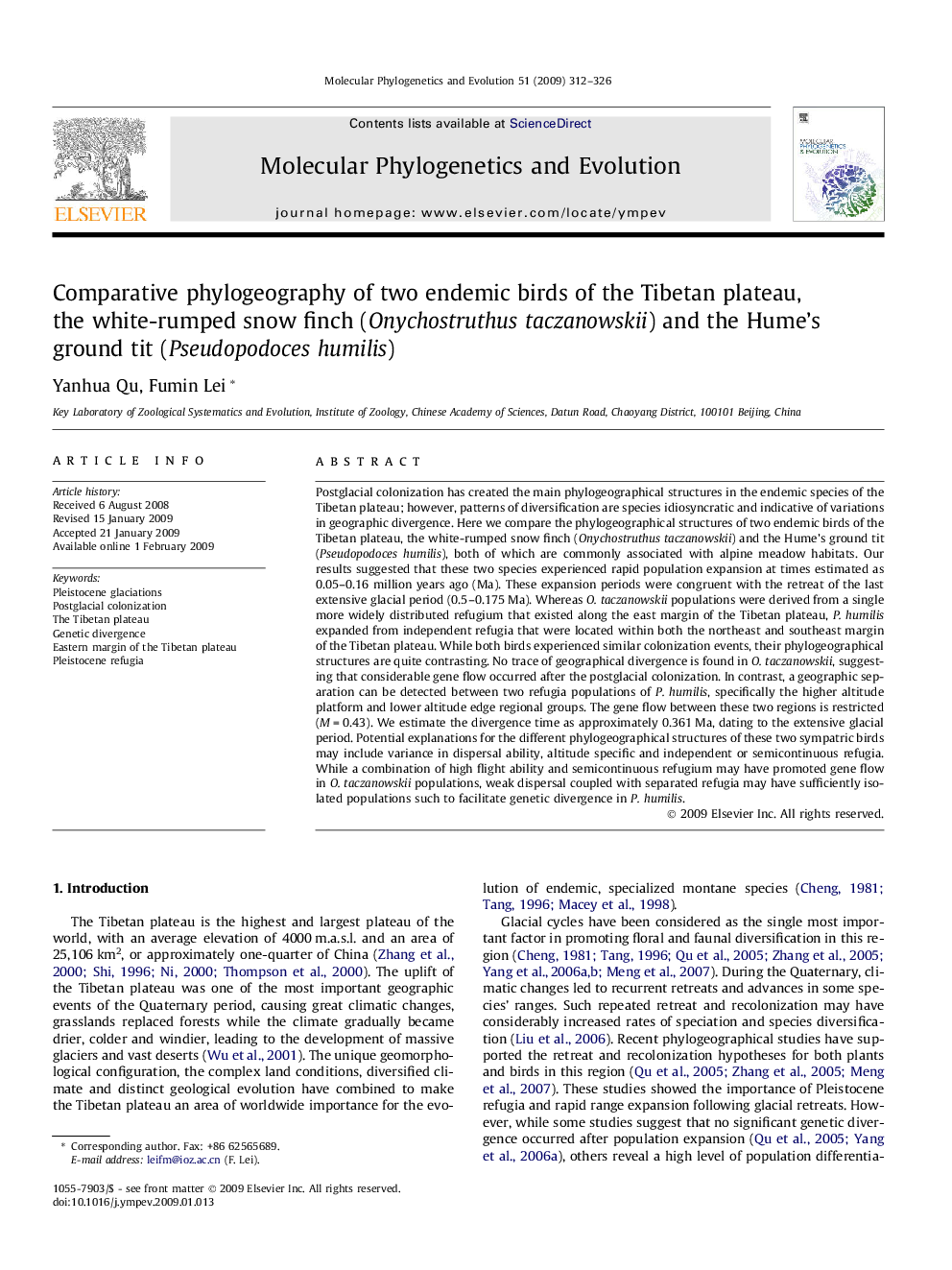| کد مقاله | کد نشریه | سال انتشار | مقاله انگلیسی | نسخه تمام متن |
|---|---|---|---|---|
| 2834374 | 1164309 | 2009 | 15 صفحه PDF | دانلود رایگان |

Postglacial colonization has created the main phylogeographical structures in the endemic species of the Tibetan plateau; however, patterns of diversification are species idiosyncratic and indicative of variations in geographic divergence. Here we compare the phylogeographical structures of two endemic birds of the Tibetan plateau, the white-rumped snow finch (Onychostruthus taczanowskii) and the Hume’s ground tit (Pseudopodoces humilis), both of which are commonly associated with alpine meadow habitats. Our results suggested that these two species experienced rapid population expansion at times estimated as 0.05–0.16 million years ago (Ma). These expansion periods were congruent with the retreat of the last extensive glacial period (0.5–0.175 Ma). Whereas O. taczanowskii populations were derived from a single more widely distributed refugium that existed along the east margin of the Tibetan plateau, P. humilis expanded from independent refugia that were located within both the northeast and southeast margin of the Tibetan plateau. While both birds experienced similar colonization events, their phylogeographical structures are quite contrasting. No trace of geographical divergence is found in O. taczanowskii, suggesting that considerable gene flow occurred after the postglacial colonization. In contrast, a geographic separation can be detected between two refugia populations of P. humilis, specifically the higher altitude platform and lower altitude edge regional groups. The gene flow between these two regions is restricted (M = 0.43). We estimate the divergence time as approximately 0.361 Ma, dating to the extensive glacial period. Potential explanations for the different phylogeographical structures of these two sympatric birds may include variance in dispersal ability, altitude specific and independent or semicontinuous refugia. While a combination of high flight ability and semicontinuous refugium may have promoted gene flow in O. taczanowskii populations, weak dispersal coupled with separated refugia may have sufficiently isolated populations such to facilitate genetic divergence in P. humilis.
Journal: Molecular Phylogenetics and Evolution - Volume 51, Issue 2, May 2009, Pages 312–326